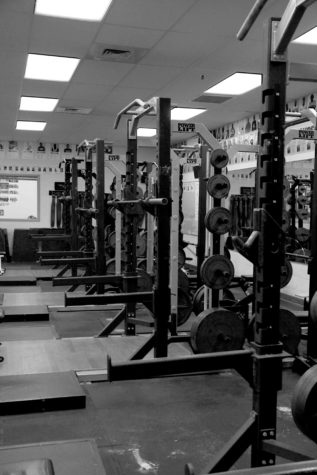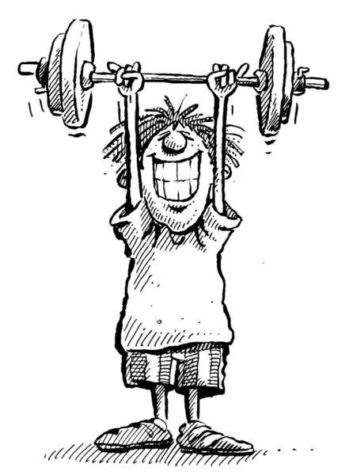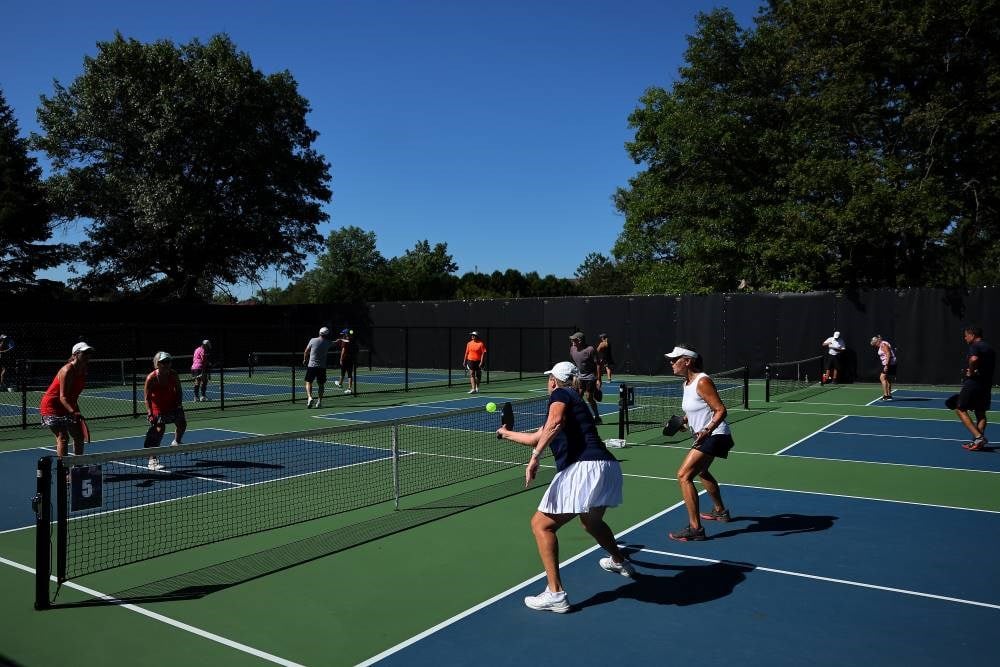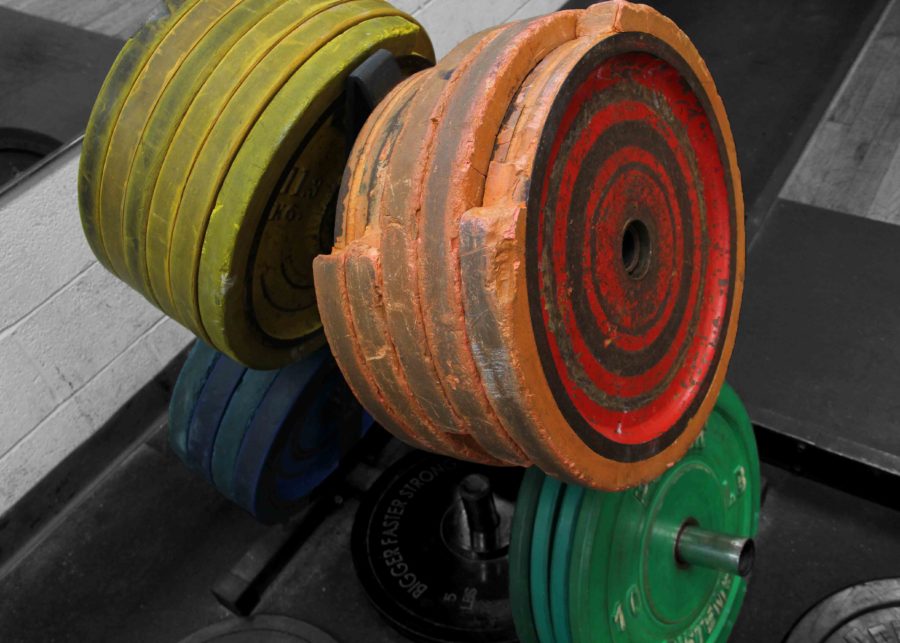Weight Lifting Injuries Are on the Rise
April 13, 2017
 Most people can agree that a student athlete wants to be the best that he/she can be. Some are willing to push themselves to the breaking point if that’s what it takes. The competitive levels of athletes are noticeably different than of those who are not involved in sports, which is expected. To outplay the other athletes and their opponents, they must be superior in every way possible, or so they think. These competitive people may be at a higher risk of injury. Nowadays, most student athletes think that spending time in the weight room is one of the best ways to get better at their sport, so that’s where they like to spend most of their time.
Most people can agree that a student athlete wants to be the best that he/she can be. Some are willing to push themselves to the breaking point if that’s what it takes. The competitive levels of athletes are noticeably different than of those who are not involved in sports, which is expected. To outplay the other athletes and their opponents, they must be superior in every way possible, or so they think. These competitive people may be at a higher risk of injury. Nowadays, most student athletes think that spending time in the weight room is one of the best ways to get better at their sport, so that’s where they like to spend most of their time.
The weight room is a place where athletes can improve a number of physical qualities, like strength, explosiveness, durability, and endurance. But sometimes it’s easy to forget that the weight room isn’t the ultimate destination, and strength training isn’t the ultimate goal. The desire to go lift in the weight room whenever possible and as hard as possible can be notably harmful. Excessive lifting can cause a large amount of problems and easily ruin their entire sports career if they’re not careful. They are at risk of experiencing traumatic injuries which are most often accompanied by immediate pain or a “popping” sound that signals something is seriously wrong. Traumatic injuries can land you in the emergency room, rehab, or worse. Overuse injuries are next in line and are just as common. An excessive amount of intense workouts take their toll on the body. Cartilage wears down and muscles, tendons and ligaments can become less limber. Dehydration and over training also play a role in overuse injuries. All of these can be a recipe for disaster unless you know how to work around them. Overuse injuries are just as common and shouldn’t be treated lightly.
When athletes come in and are expected by their coaches to lift heavy weights, they like to push themselves until they get the weight that they want to get. When someone pushes him/herself to get this certain weight, even when he/she can be physically incapable of doing so, it is possible to lose balance which would cause other muscles to turn on that usually aren’t needed for that certain lift.
Improper form is another serious issue that needs to be addressed and be taken more seriously. Using proper form is critical if you want to prevent an injury. Most athletes who choose to start lifting weights usually do not receive any type of training or take any beginners classes to teach them proper form before adding heavy weights to them. They simply just jump right into it. Improper form is the number one cause for injuries in the weight room. Having an improper form can guarantee some type of injury at some point in that athlete’s career.
To help avoid these injuries, prior to the actual workout, warm-up properly and effectively. This will get your muscles loose and ready to start working out. The school’s weight training area is a little sparse when it comes good effective warm up equipment. Most the athletes simply jog for 30 seconds. This is a serious issue and the efforts of the student athletes for the warm up should be addressed and certainly improved.
Doing some car dio before lifting weights is a great start to warming up but it’s not enough by itself. The goal of warming up is to keep you from getting injured while lifting. Warming up is about preparing your muscles and your joints for the heavy loads they are about to experience. Here in the school’s lifting class, not many people care enough to warm up. Some don’t think about how they are at an increased risk for getting injured. There are a few girls who are currently injured in this class, and I decided to ask them what happened or why they are injured. Ashley Beall is a current weight lifter at the school and admitted that she rarely warmed up properly. “I never really thought about how a simple warm up would help me avoid injuries like this”. Ashley recently injured her knee and was diagnosed with Patellar Tendinitis. Patellar Tendinitis is a common overuse injury that is caused by repeated stress on the patellar tendon/knee. Like stated previously, overuse injuries are very common and very harmful in the weight room. My next interviewee from the school’s weightlifting class was Emily Lehman. She was diagnosed with Achilles Tendinitis which is caused by repetitive or intense strain on the Achilles tendon. She also admits that she “didn’t warm up properly. Sometimes I didn’t warm up at all but I still tried to lift heavy”. These are only a few of the injuries that are caused by lifting improperly. These athletes from the weight training class are evidence that perhaps some of our current athletic culture at THS needs to be reexamined for the good of the school, the teams, and especially the athletes themselves.
dio before lifting weights is a great start to warming up but it’s not enough by itself. The goal of warming up is to keep you from getting injured while lifting. Warming up is about preparing your muscles and your joints for the heavy loads they are about to experience. Here in the school’s lifting class, not many people care enough to warm up. Some don’t think about how they are at an increased risk for getting injured. There are a few girls who are currently injured in this class, and I decided to ask them what happened or why they are injured. Ashley Beall is a current weight lifter at the school and admitted that she rarely warmed up properly. “I never really thought about how a simple warm up would help me avoid injuries like this”. Ashley recently injured her knee and was diagnosed with Patellar Tendinitis. Patellar Tendinitis is a common overuse injury that is caused by repeated stress on the patellar tendon/knee. Like stated previously, overuse injuries are very common and very harmful in the weight room. My next interviewee from the school’s weightlifting class was Emily Lehman. She was diagnosed with Achilles Tendinitis which is caused by repetitive or intense strain on the Achilles tendon. She also admits that she “didn’t warm up properly. Sometimes I didn’t warm up at all but I still tried to lift heavy”. These are only a few of the injuries that are caused by lifting improperly. These athletes from the weight training class are evidence that perhaps some of our current athletic culture at THS needs to be reexamined for the good of the school, the teams, and especially the athletes themselves.



































